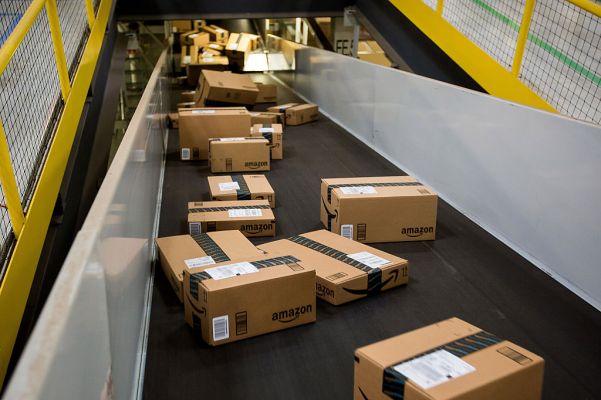When we think about Amazon, it’s usually about some aspect of its vast retail and logistics operation that allows customers to order just about anything and receive it relatively quickly. But with a market cap of $1.6 trillion, it’s actually a conglomerate of multibillion-dollar businesses. That diversification means it doesn’t have to rely on a single revenue stream, even one as large as its public cloud business. But at what point might it be too big?
Last week, the company reported quarterly revenue of almost $140 billion. Let’s start with its cloud business (AWS), which generated top line of $17 billion, up 40% year over year in Q4 2021. That result put AWS on a run rate of over $70 billion, up from the $51 billion pace on which it closed 2020.
Amazon’s public cloud is a business powerhouse, and in many ways it’s the fuel that drives the company’s revenue engine by helping to underwrite other bets its parent company is making.
Part of the reason for AWS’s financial success — and therefore its ability to influence the company’s aggregate results so positively — is its ability to run its data centers extremely efficiently, which extends server life and reduces overall costs, Amazon CFO Brian Olsavsky explained to analysts in the Q4 2021 earnings call.
Put simply: Most of Amazon’s operating income came not from selling stuff, but instead from selling compute and storage.
“We’ve been operating at scale for over 15 years, but we continue to refine our software to run more efficiently on the hardware,” he said. “This then lowers stress on the hardware and extends the useful life both for the assets that we use to support AWS’s external customers, as well as those used to support our own internal Amazon businesses.”
The external results speak for themselves, with Amazon’s cloud business not just posting huge operating incomes, but also showing growth similar in percentage terms with far-smaller rivals like Microsoft and Alphabet. Internally, things are even more interesting.
Amazon revealed its advertising revenue for the first time in its earnings report last week, reporting a business that tops $38 billion in annualized revenue and is growing at a year-over-year rate of more than 30%. “Advertising services” revenues for the fourth quarter of 2021 were $9.72 billion, up 37% over the year-ago quarter. To put that into context, Amazon’s ad business was bigger than Google’s ad revenue from YouTube for the same period, the latter of which came in at $8.6 billion.
And don’t forget Prime, which Amazon announced it would try to squeeze a bit more revenue from by raising its price from $119 to $139 per year. If the 200 million Prime member number holds up as we understand it, the price bump could generate around $4 billion in yearly revenue.
Yet for all that revenue sloshing around, Amazon’s operating income fell dramatically in the fourth quarter — from $6.9 billion in the year-ago period to $3.5 billion in its most recent quarter. This is where the concept of diversification brings strength in the form of business durability.
Amazon has had some extraordinary costs in the last few years: From its early response to COVID-19 to supply chain and inflationary issues, the company has had to adjust to a new world. For example, total operating costs as a percentage of revenue grew from 94.5% in Q4 2020 to 97.5% in Q4 2021.
But while the company invests in its global retail business — which grew 9% year-over-year in Q4 2021 domestically, and -1% internationally in the same period — its public-cloud division kicked out 40% growth and $5.3 billion in operating income. Put more simply, most of Amazon’s operating income came not from selling stuff, but instead from selling compute and storage.
Amazon is therefore not an e-commerce player with a side-gig selling cloud services — it’s a maturing retailer with an infrastructure play that is powering both its growth and its operating profitability. At least in its most recent quarter.
This is where we reach the other side of the diversification coin. Yes, Amazon has done well by offering its internal compute services externally, allowing other companies to leverage the work it has done on building low-cost, high-quality cloud services. But it is also able to use AWS to cover operating losses posted by its global e-commerce businesses. For consumers, that could mean lower prices, but what does this imply for competing e-commerce players that lack the ability to subsidize their operations similarly?
For Amazon and its shareholders, diversification is a boon. AWS is hugely profitable, and the company’s Rivian investment provided “$11.8 billion included in non-operating income” in the company’s most recent quarter. That’s not Amazon’s retail business, but instead a supporting investment made to, in time, help that business. Still, it generated so much profit in the quarter that Amazon crushed quarterly investor expectations.
Diversification is good for investors, and good for companies, but maybe not for competition. AWS’s success is also a reminder that big businesses can leverage one effort for another, and perhaps there is such as thing as too big when it comes to mega-corporations. Microsoft is testing this boundary today with its gaming purchases.
It may seem obvious that an enterprise B2B software vendor with a huge public cloud business should buy consumer gaming brands to support its infrastructure business. But try taking on Microsoft in the gaming world when it can leverage incomes from corporate cloud sales to aggregate IP for its expanding gaming division.
You might raise Sony as a counter-example, as it is also buying other gaming companies to compete with Microsoft. But when you compare the companies that Microsoft is able to buy with its wealth, the comparison becomes imbalanced. The analogy is similar for Amazon. It has competitors in both public cloud and e-commerce, but combining those sectors gives the company the ability to keep its leaky bucket full. Non-platform companies cannot do the same.
